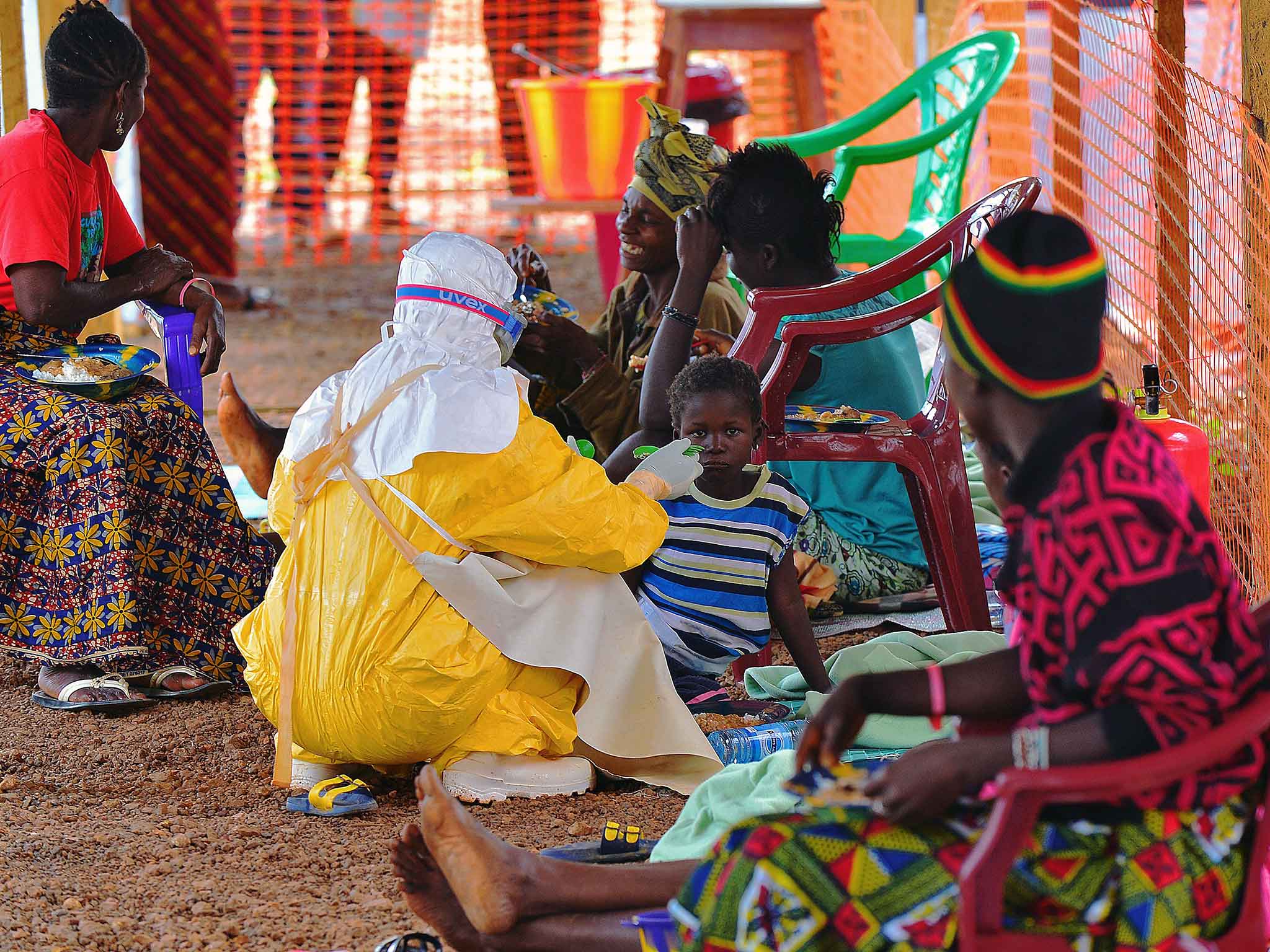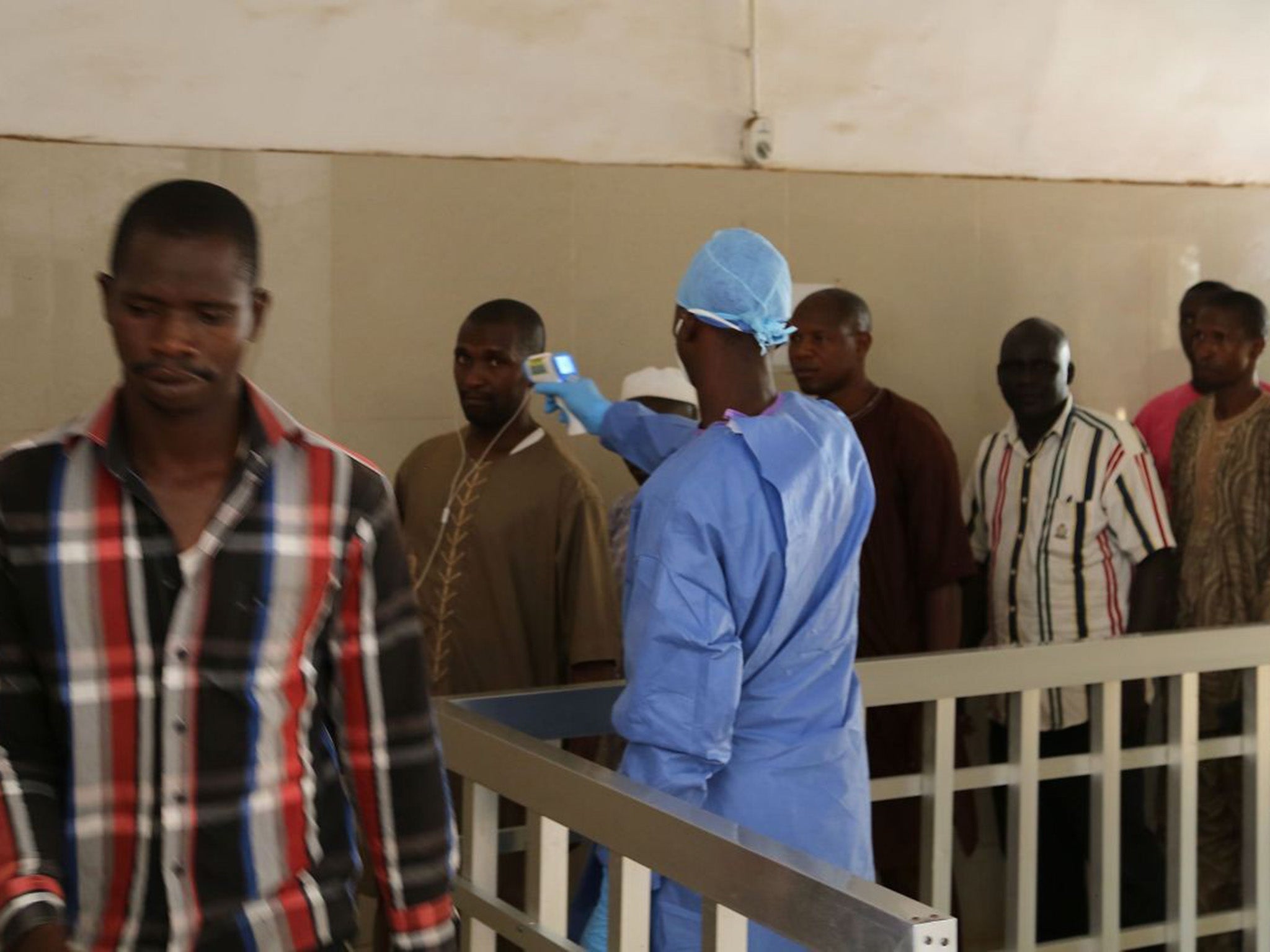Ebola: The secret hideout of the virus
The virus has disappeared but relief is only temporary: Ebola is still out there. Leigh Cowart on how scientists are frantically trying to locate it before another outbreak

Your support helps us to tell the story
From reproductive rights to climate change to Big Tech, The Independent is on the ground when the story is developing. Whether it's investigating the financials of Elon Musk's pro-Trump PAC or producing our latest documentary, 'The A Word', which shines a light on the American women fighting for reproductive rights, we know how important it is to parse out the facts from the messaging.
At such a critical moment in US history, we need reporters on the ground. Your donation allows us to keep sending journalists to speak to both sides of the story.
The Independent is trusted by Americans across the entire political spectrum. And unlike many other quality news outlets, we choose not to lock Americans out of our reporting and analysis with paywalls. We believe quality journalism should be available to everyone, paid for by those who can afford it.
Your support makes all the difference.There was a certain kind of quiet hopefulness when, in late April this year, the last Ebola patient of the West African epidemic – a two-year-old boy – walked out of a treatment facility in Monrovia, Liberia. With the smouldering embers of the outbreak fading, there was cause for celebration. But there remains the impotent fear of the unseen: Ebola is still out there, lurking. We just don’t know where it’s hiding or when it will be back.
If we’re going to stop Ebola in the future, we have to find its hiding places. Ebola is a zoonotic disease, meaning that it can spread between animals and humans. It burns hot and fast through people.
Its ruthless nature means that we are often the end of the line for the virus: a host like us that gets too sick too fast, that dies too quickly, cuts down the virus’s ability to jump into a fresh body. To remain a threat, Ebola needs a safe house in which to lie low and hide.
Such a long-term host, the quiet refuge of a pathogen, is known as a reservoir species. If a reservoir species is Ebola’s safe house, we are its luxury retirement property, a place for it to live out its last days with a bang. The trouble is that we aren’t sure where the safe house is. If we are going to be vigilant against Ebola’s re-emergence, we need to find it.

Searches so far have focused on forested parts of Africa, the home of a number of possible reservoirs. Classically, bats have been considered the most likely culprits, given that they overlap with humans geographically and can carry Ebola infection without symptoms. Based on research that has tested a wide variety of small mammals, bats, primates, insects and amphibians, several species of fruit bat have emerged as possible candidates.
A 2005 study published in Nature and helmed by Eric Leroy tested more than 1, 000 small vertebrates in central Africa and found evidence of symptomless Ebola infection in three species of fruit bat, suggesting that these animals – which are sometimes hunted for bushmeat – might be Ebola’s reservoir. An editor’s summary ran alongside the paper, titled simply: ‘Ebola virus: don’t eat the bats’. But not everyone is convinced that fruit bats are to blame.
Some researchers, like Fabian Leendertz of the Robert Koch Institute in Berlin, are working with circumstantial evidence that points to the insectivorous bat Mops condylurus. The first – or “index” – case of the 2014 Ebola epidemic was traced to a two-year-old boy in Guinea who may have spent time inside a large hollow cola tree near his house before falling ill. The tree was a known roost for these bats and a popular neighbourhood play spot. The boy died in December 2013, and by the following March, officials were alerting the public to the brewing outbreak. However, by the time researchers arrived in April to examine the tree and its inhabitants, it had been burned down.

Still others are looking elsewhere for Ebola’s home, sceptical that bats are to blame. Virologist Jens Kuhn of the US National Institute of Allergy and Infectious Diseases at Fort Detrick, Maryland, has told Nature that he thinks bats live much too close to humans: if they were the reservoir, it would be curious that there have been so few emergences of Ebola since we first discovered the virus 40 years ago. Instead, he believes insects or fungi could be possibilities. As he told National Geographic in 2015, he’s betting on finding Ebola in a “strange host”, explaining that perhaps the virus is hiding in a tick or a flea that intermittently bites bats, which only sometimes initiates the virus’s move from the wild into human communities.
Nevertheless, bats are largely considered to be our best bet, even if a lot of the incriminating evidence is circumstantial. The fact that certain bat species can harbour an Ebola infection is important. A screening test in 1996, during which researchers injected live Ebola virus into 24 species of plant and 19 species of animal – such as pigeons, cockroaches, small mammals and lizards – found that bats could test positive for Ebola infection for at least 12 days. None of the bats died from the virus, and none of the other species showed such potential as hosts. This capacity to handle the virus adds to the argument that bats could be Ebola’s hideout. But without further evidence, we can’t be sure that they are.
The reason we need to be sure has to do with prediction and prevention: if we know the reservoir species and where they live, we can allocate resources to areas at risk, help the local communities better prepare, and cut down on potential exposure to the virus by educating those who might stumble through its territory. And that’s where zoonotic niche mapping comes in.

These maps are a way to look for patterns in where Ebola comes out of the forest and into the homes that line the wilderness – scenarios known as ‘spillover’ events. By studying Ebola spillover, we can better predict where the virus might emerge in the future. Researchers like spatial epidemiologist David Pigott are combining measures of ecological features like vegetation, elevation and the presence of suspected reservoir species with the exact geospatial coordinates of index cases to create an algorithm that describes who might be at risk.
“We wanted to know where else in Africa could potentially be in the same situation as Guinea in 2013 and early 2014, ” says Pigott, lead author of the newly updated zoonotic niche map of Ebola in Africa. Back then, doctors were seeing cases of Ebola virus disease but not diagnosing them correctly, “because no one thought that Ebola could be circulating in that area”.
Curiously, in Pigott’s model, the presence of bats is not the strongest clue precipitating a spillover event. Instead, he says, the main predictor of where Ebola may emerge is the vegetation index. The amount of vegetation “could influence a variety of different species, ” he explains. Though bats were included in the model, “it was vegetation that dominated the profile”.
In other words, among areas that had experienced a spillover event, there was a critical pattern of plant cover that stands to be very helpful in identifying areas that might be at risk from Ebola in the future.
While ecological niche mapping can help in predicting spillover, there’s also another, less well explored hiding place to consider: people. Ebola has an incredible ability, unknown until recently, to stake out a claim in bodily fluids of men who have survived infection, long after they have returned to health. In fact, a recent study found that over half of male survivors tested positive for Ebola in their semen one year or longer after they’d recovered, with one survivor’s semen testing positive a full 565 days post-recovery.

Because of the risk of spreading infection, male survivors are recommended to avoid unprotected sex until their semen has twice tested negative for Ebola. Despite this, Pigott thinks it’s worth bearing in mind that most outbreaks historically have followed a narrative of human–animal interaction. “The other big unknown in terms of future outbreaks is how long is the transmission route viable.”
It’s hard to incorporate transmission by survivors into a predictive model because we simply don’t know how long people can carry the virus and remain infectious. This potential for human-to-human transmission means that Ebola has opportunities to re-emerge without a spillover event from the forest. And this means you don’t even need to be near the forest to get it.
Ebola’s persistence in semen means we now have to track this curious villain in two ways. We must look for both patterns of emergence in our messy data streams. So to be prepared for Ebola in the future, we need to discover how the virus moves through the wild and the city alike. We must find out where it thrives and how it spills over, and we must track it to all of the places it goes when we are not watching from the hospital bedside. With Ebola, there remain too many questions for us to rest easy.
This article was first published by Wellcome on Mosaic and is reproduced here under a Creative Commons licence
Join our commenting forum
Join thought-provoking conversations, follow other Independent readers and see their replies
Comments